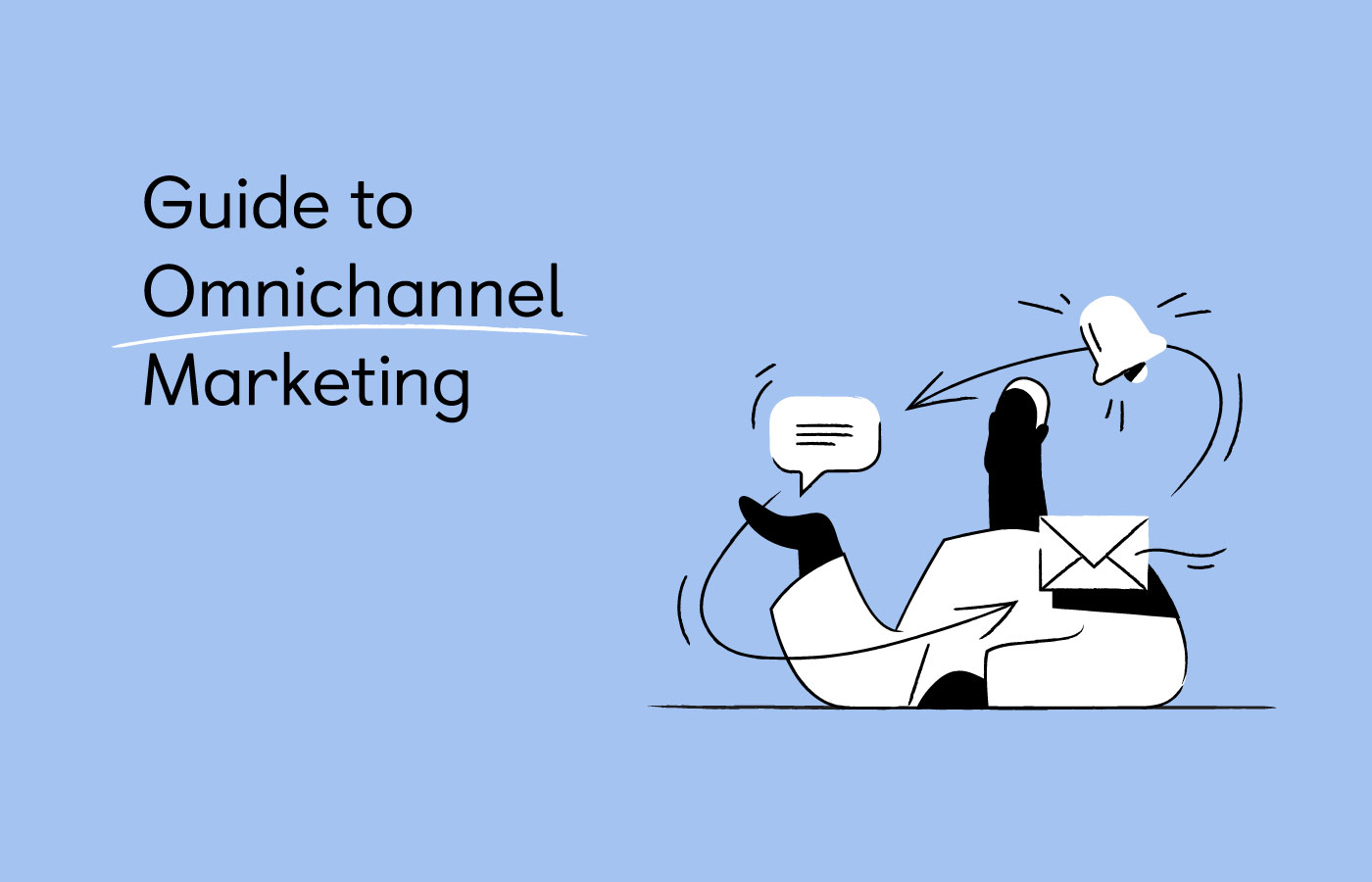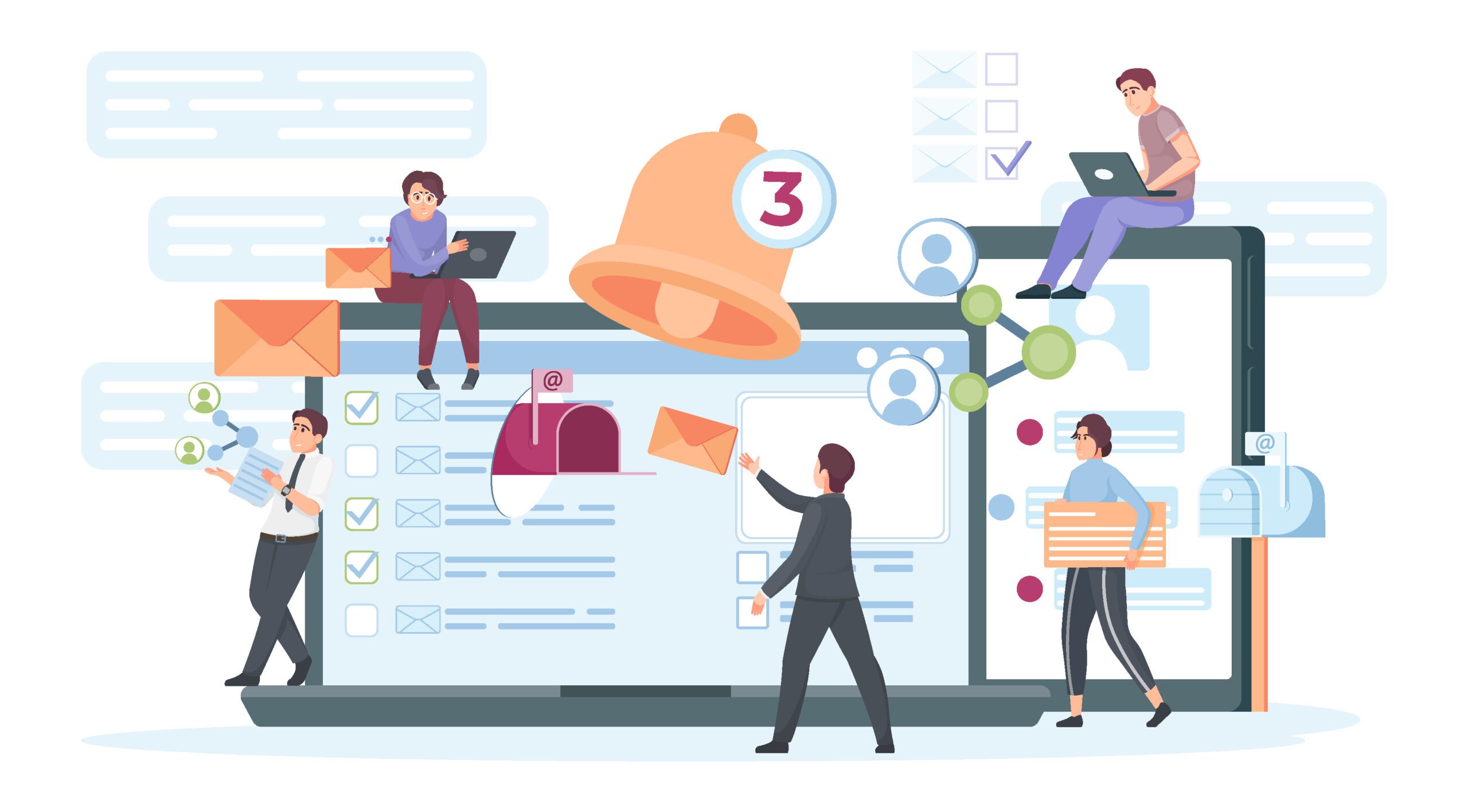Omnichannel Marketing Automation

Today, businesses recognize the importance of maintaining a consistent brand message and user experience, whether customers are engaging through brick-and-mortar stores, online websites, mobile apps, social media, or other channels. Omnichannel marketing automation helps break down silos between different channels, unifying customer data, and coordinating marketing efforts to provide a cohesive and synchronized experience. By doing so, businesses can offer personalized interactions, respond to customer needs more effectively, and ultimately foster brand loyalty.
Let’s understand in detail what omnichannel marketing automation is all about and how it brings greater value to customers.
What is Omnichannel Marketing?

Source | Omnichannel meaning
Omnichannel marketing is a comprehensive strategy that aims to deliver a seamless customer experience across multiple channels and touchpoints. In this approach, businesses strategically coordinate their offline and online marketing efforts, including websites, mobile apps, social media, physical stores, and more, to provide a cohesive and unified brand experience.
The key principle of omnichannel marketing is to recognize and cater to the diverse ways in which consumers interact with a brand, ensuring consistency and continuity throughout their journey. By leveraging multiple channels in a synchronized manner, businesses seek to create a holistic and personalized environment that enhances customer engagement, loyalty, and satisfaction.
Omnichannel strategies acknowledge the dynamic nature of consumer behavior, emphasizing the importance of fluid, interconnected interactions to meet customers’ evolving expectations.
Example of Omnichannel Marketing
Omnichannel marketing transcends traditional marketing boundaries and connects with your audience wherever they may be. It holds to the phrase: “be where your customers are.” Let’s understand the working of omnichannels through an example:
Let’s consider a fictional retail company, XYZ Electronics. XYZ Electronics has physical stores and an online presence, including a mobile app and a website. Let us see how they utilize omnichannel marketing automation to create a seamless and cohesive customer experience.
- A customer, Sarah, visits one of XYZ Electronics’ physical stores and browses a selection of smartphones. She signs up for the store’s loyalty program using her email address. The company’s system captures the information.
- Later that week, Sarah visits the XYZ Electronics website to compare prices and read reviews. She also downloads the mobile app for convenience.
- The omnichannel marketing automation system integrates data from Sarah’s store visit, online browsing, and app usage. It recognizes her preferences and behaviors, allowing XYZ Electronics to send personalized promotions and recommendations. For instance, Sarah receives an email with a special discount on the smartphone model she viewed in-store and a notification in the mobile app highlighting a limited-time online promotion.
- If Sarah decides to make a purchase, the omnichannel experience ensures a smooth transaction, allowing her to buy the smartphone online and choose to either pick it up at the store or have it delivered. The system updates her loyalty points across all channels, providing a consistent and convenient experience.
In this example, omnichannel experience enables XYZ Electronics to understand and engage with Sarah seamlessly across various touchpoints, delivering a personalized and unified experience.
Multichannel vs Omnichannel Marketing
Multichannel marketing involves engaging with customers through various independent channels, such as websites, social media, email, and physical stores. While it allows businesses to establish a presence across different platforms, it lacks the seamless integration and consistency inherent in omnichannel marketing.
In contrast, the omnichannel experience creates a unified and interconnected experience across all channels. The depth of integration and customer-centric focus makes omnichannels superior in delivering a holistic and tailored engagement strategy.
Let’s look at the key differences between these two in detail:
| Key of difference | Multichannel marketing | Omnichannel marketing |
| Definition | Uses multiple channels to reach customers, but these channels may operate in silos without much integration. | Integrates various channels to provide a seamless and consistent customer experience across all touchpoints. |
| Focus | Channel-centric, with a focus on individual channels and their effectiveness in isolation. | Customer-centric, prioritizing a unified experience for customers across all channels. |
| Data Integration | Data is collected and analyzed separately for each channel, leading to fragmented insights. | Involves integrating data from various channels to create a unified customer view. |
| Flexibility | Offers flexibility for customers to transition between channels without disruption. | May not provide a smooth transition between channels, potentially causing customer friction. |
| Customer journey | Focuses on the entire customer journey, acknowledging that customers may switch between channels during their interaction. | Primarily looks at specific interactions within individual channels without considering the broader customer journey. |
| Example | A customer can start an interaction on a website, continue on a mobile app, and complete a purchase in a physical store seamlessly. | A customer may receive different promotions or messages on social media, email, and in-store, with limited connection between these messages. |
Benefits Of Omnichannel Marketing Automation

Source | Benefits of omnichannel marketing automation
Let’s look at the advantages of omnichannel marketing automation:
- Higher reach: Utilizing multiple channels allows a business to cast a wider net, increasing brand visibility. The ability to connect with customers at their locus, be it on social media, through email, or in-store, ensures that a broader audience is engaged. Omnichannel marketing thrives on interconnectedness, ensuring all customer touchpoints collaborate seamlessly to provide a unified and higher reach.
- Increased revenue: A study involving 46,000 shoppers revealed that consumers engaged in omnichannel shopping tend to spend more money than those who utilize only a single channel for their purchases. This increased expenditure directly translates into boosted revenue. As consumers transition seamlessly between online and offline channels, businesses capture sales opportunities at every turn.
- Omnichannel experiences: Businesses can create highly targeted and personalized campaigns by gathering data and analyzing customer behavior. These omnichannel experiences enhance customer engagement and increase conversion rates.
- Gain competitive advantage: In today’s intensely competitive market, an omnichannel strategy helps set your brand apart. It helps generate an 80% higher rate of incremental store visits by consumers.
Building an Effective Omnichannel Marketing Automation Strategy

Source | Creating an omnichannel experience
A structured approach is imperative to harness the potential of omnichannel marketing automation. Building an omnichannel marketing campaign involves the following key steps:
- Customer journey mapping: To implement a successful omnichannel marketing strategy, it’s crucial to understand how customers engage with your brand across various touchpoints. This involves tracking their journey and identifying the channels they prefer. This understanding forms the foundation for creating a seamless and integrated omnichannel experience.
- Data collection: Data is the lifeblood of omnichannel marketing automation. Gathering data from diverse sources, including customer interactions, demographics, and purchase history is essential. This data enables you to gain insights into your customers’ preferences, behaviors, and needs at different stages of their journey. It’s the fuel that powers personalized campaigns and ensures that marketing efforts are driven by customer insights.
- Channel prioritization: Not all channels are equally valuable to your audience. An omnichannel strategy involves prioritizing channels where your customers are most active. This prioritization is driven by an understanding of your audience and their preferences. It ensures that your efforts are focused on the channels where your target audience is most likely to engage with your brand.
- Marketing automation tool: Omnichannel marketing automation tools play a pivotal role in creating an omnichannel strategy by automating tasks, delivering personalized content, and analyzing campaign performance.
- Unified customer database: Centralizing customer data allows for a holistic view of your customers, enabling you to create 360-degree customer profiles. It ensures a comprehensive understanding of your customers, which is essential for delivering personalized campaigns and maintaining a coherent omnichannel experience.
- Audience segmentation: Segmenting your audience based on behavior, preferences, demographics, and other characteristics helps in delivering targeted and relevant content.
- Data-driven optimization: Tracking and analytics help to measure the effectiveness of your omnichannel marketing strategy. Key performance metrics like conversion rates, click-through rates, and customer engagement, provide insights into which channels and campaigns are most effective.
Utilizing this data enables you to continuously fine-tune and enhance your campaigns, identifying areas of success, areas that require improvement, and pinpointing where adjustments are necessary.
Future of Omnichannel Marketing
The future of omnichannel marketing holds exciting possibilities as technological advancements continue to reshape consumer behavior and expectations.
Businesses are likely to adopt even more sophisticated omnichannel strategies that seamlessly integrate physical and digital experiences. Artificial intelligence (AI) and machine learning will play a pivotal role, enabling personalized and predictive interactions across channels. The convergence of online and offline data will empower marketers to create hyper-targeted campaigns, anticipating customer needs and preferences in real-time.
As augmented reality (AR) and virtual reality (VR) technologies become more mainstream, they may introduce immersive elements to the omnichannel experience, allowing customers to engage with products and services in innovative ways.
Additionally, the rise of voice-activated devices and the Internet of Things (IoT) will contribute to a more interconnected ecosystem, enabling marketers to deliver cohesive messaging through voice, smart devices, and traditional channels.
Ultimately, the future of omnichannel marketing lies in a dynamic blend of cutting-edge technology, data-driven insights, and a relentless focus on providing customers with a seamless, cohesive, and personalized journey across all touchpoints.
For more updates, follow yMedia. yMedia is an award-winning content marketing company, committed to bringing the timeless art of storytelling into the digital age. They’ve worked for several brands in the Web3 space – including Forbes, Delta Exchange, Millionero, and many more.
Contact yMedia to hook your customers with amazing content to drive measurable business outcomes and grow your community.